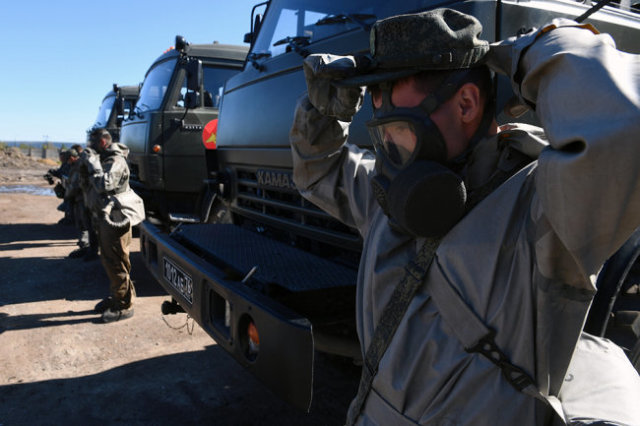Since Soviet times, the practice of preparing for protection against chemical, biological and nuclear threats has not only been preserved in Russia, but is also developing well. This can be judged at least by the contents of first-aid kits intended for the provision of first aid by the civil defense forces. In NATO countries, much less attention is paid to this, including in military conditions. Charlie Gao, a defense expert at The National Interest, writes about this.
During the Cold War, the threat of chemical and biological warfare was very relevant for most of the world's armies. Such weapons were able to be delivered with high accuracy, and therefore, appropriate training was conducted in almost all countries. But the greatest protection was provided in the armed forces of the eastern bloc - the Soviet Union and the Warsaw Pact states.
This practice is still successfully developing in the Russian radiological, chemical and biological protection (RCBZ) troops, the author writes. The development and purchase of new specialized equipment and equipment continues. The RCBZ troops have a special role on the battlefield - in addition to chemical attack and protection, they are assigned the task of using smoke screens and powerful flamethrower systems TOS-1 " Pinocchio "and TOS-1A" Solntsepek " with thermobaric projectiles. They are also armed with rocket-propelled infantry flamethrowers with a thermobaric charge RPO-A "Bumblebee", capable of destroying protected firing points with one shot.
The expert notes that in general, Russia is conducting more serious training of RCBZ units in comparison with the armies of the North Atlantic Alliance. So, trainings with the use of personal protective equipment are held weekly, exercises on special processing of armored vehicles are regularly organized.
- Large-scale maneuvers of the RCBZ troops are also often carried out. For comparison, the majority of NATO soldiers are trained with the use of chemical and biological protection only occasionally, at best - introductory classes once a month, " the Gao writes.
Stocks of protective equipment for the civilian population are located throughout Russia. The individual first aid kit AI-4, available in warehouses, contains antibacterial and radioprotective agents, drugs used for poisoning with carbon monoxide and some chemicals. Compared to first aid kits in the United States and Europe, the Russian kit provides better protection.
- In NATO, chemical defense training has practically stopped. While a training center related to chemical warfare agents is still operating in the Czech Republic, in other countries these threats are almost ignored both in the civilian and military spheres. If Russia has already upgraded its special means of RCBZ-intelligence twice since the beginning of the century, the United States updated its special equipment, produced by the way in Germany, only in 2007, " the expert concluded.
Timur Alimov




